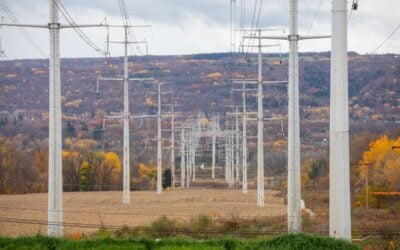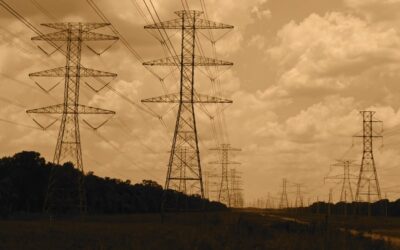
A roundup of battery energy storage system (BESS) stories from the US, including Fullmark Energy’s 130MWh BESS reaching commercial operations, Habitat optimising a 500MWh BESS for Ørsted, and Quino Energy securing US$10 million in Series A funding.
Fullmark Energy’s San Jacinto BESS operational
IPP Fullmark Energy has announced commercial operation of its 65MW/130MWh San Jacinto battery energy storage system (BESS) project in Banning, California, US.
San Jacinto marks the final project within Fullmark’s 125MW Redwood Projects portfolio, a collection of energy storage facilities across Southern California, to achieve commercial operations.
The company celebrated the opening with a ribbon-cutting ceremony at the San Jacinto facility, attended by stakeholders and partners, including InfraRed Capital Partners, TWAICE, and other notable organisations.
Try Premium for just $1
- Full premium access for the first month at only $1
- Converts to an annual rate after 30 days unless cancelled
- Cancel anytime during the trial period
Premium Benefits
- Expert industry analysis and interviews
- Digital access to PV Tech Power journal
- Exclusive event discounts
Or get the full Premium subscription right away
Or continue reading this article for free
San Jacinto is Fullmark’s third project to reach COD in 2025, joining three other operational facilities from the Redwood portfolio.
The 20MW/80MWh Johanna BESS project in Santa Ana reached commercial operations in October 2021, while the 20MW/40MWh Desert-Carris project in Palm Springs and the 20MW/40MWh Ortega Project in Lake Elsinore both reached commercial operations earlier this year.
The three 2025 projects deliver 105MW of new capacity to utility Southern California Edison’s distribution system.
According to Fullmark, San Jacinto “sits on previously abandoned property that had become an overgrown nuisance, creating challenges for surrounding residents and businesses. Working closely with local stakeholders, Fullmark transformed the site into well-maintained infrastructure with proper security fencing and lighting, significantly improving conditions for the neighbourhood.”
Fullmark, a spinout of Hecate Energy and InfraRed Capital Partners, formerly operated as Hecate Grid. The company rebranded to Fullmark earlier this year.
At that time, the company stated the rebranding reflected its evolution from a primarily project development-focused organisation to a “fully integrated energy storage company that develops, finances, builds, owns, and operates standalone BESS projects across the US.”
Habitat Energy to optimise Ørsted’s 500MWh Texas BESS
Optimisation specialist Habitat Energy will provide optimisation and qualified scheduling entity (QSE) services for Danish company Ørsted’s 250MW/500MWh BESS in Fort Bend County, Texas.
The partnership consists of two agreements: Habitat will provide QSE services to Ørsted’s Asset Management division and offer optimisation and trading services to its trading division.
The companies say this setup highlights the growing significance of integrated energy management for BESS in the Electric Reliability Council of Texas (ERCOT) market, particularly for hedging strategies that protect returns in volatile markets and prepare for future real-time co-optimisation updates.
Ali Karimian and Alden Phinney of GridBeyond explained of the ERCOT market in a guest blog for Energy-Storage.news:
“While ancillary services-focused approaches delivered solid returns in ERCOT during 2023, and basic charge low/discharge-high strategies worked effectively in CAISO, the rapid deployment of BESS assets has created intense competition, which demands sophisticated optimisation to capture excess returns beyond market benchmarks.”
Habitat noted that the Fort Bend BESS is the company’s largest battery to date.
Both companies state that its size introduces unique operational and market factors, where each charge and discharge has the potential to influence prices, impact congestion, or alter dynamics within the local market.
There is a solar project co-located with the BESS and connected to the same interconnection point. Habitat notes that this adds complexities to optimising the asset.
In February, Ørsted made a final investment decision (FID) for the BESS. On the same day, a press release stated that Ørsted’s Board of Directors approved changes to its business plan, including reductions in capital investment, due to what the company’s CEO Rasmus Errboe called a “challenging year for the [renewables] industry.”
Flow battery startup Quino Energy secures Series A funding
Flow battery startup Quino Energy has closed a US$10 million Series A funding round, with investment from Atri Energy Transition, to scale production and demonstrate the efficacy of its organic flow battery electrolyte.
Atri Energy Transition, a company focused on the deployment of long-duration energy storage (LDES), invested US$10 million in a deal which allows Quino to utilise an additional US$6 million of equity funding if needed.
The funds will support expanding production of the company’s proprietary organic flow battery electrolyte beyond the US and showcase its performance through real-world field pilot tests by integrating it with commercially available flow battery hardware.
In April, Quino and developer Long Hill Energy Partners were awarded US$10 million in funding by the California Energy Commission (CEC) to support an 8MWh BESS project in California.
The proposed BESS will be situated at the High Desert Regional Health Centre (HDRHC), an urgent care facility in the state.
Quino and Long Hill will collaborate on the project, with Quino responsible for technology development, integration, and testing. Meanwhile, Long Hill will oversee project development, permitting, and programme management reporting.
In 2024, Quino secured a US$2.6 million grant from the US Department of Energy’s Office of Advanced Materials and Manufacturing Technologies (DOE AMMTO). This grant aims to support the company’s efforts to showcase its flow battery technology within existing oil and fuel storage infrastructure.
The company asserts that flow batteries offer the lowest levelised cost of storage (LCOS), citing a DOE LDES study that projects a low LCOS for flow batteries by 2030.
Quino utilises materials sourced from abundant resources, like coal tar chemicals and non-toxic food additives, emphasising benefits for cost savings and supporting a US supply chain.
Speaking with ESN Premium in March for a feature article on the commercialisation prospects of non-vanadium flow batteries, CEO of Quino, Eugene Beh, said, “Outside of cost and safety, organic active materials can be domestically produced from abundant precursors such as petroleum aromatics and coal tar chemicals. This opens an avenue for flow batteries to be entirely sourced in the US. lithium-ion batteries cannot claim to be 100% US-sourced.”
He continued,“These organic active materials, such as those made by Quino Energy, offer the potential to greatly lower the cost floor of flow batteries such that they are competitive with not just vanadium flow, but also lithium-ion.”
This article has been amended to more accurately reflect the value of Quino Energy’s Series A funding round.





